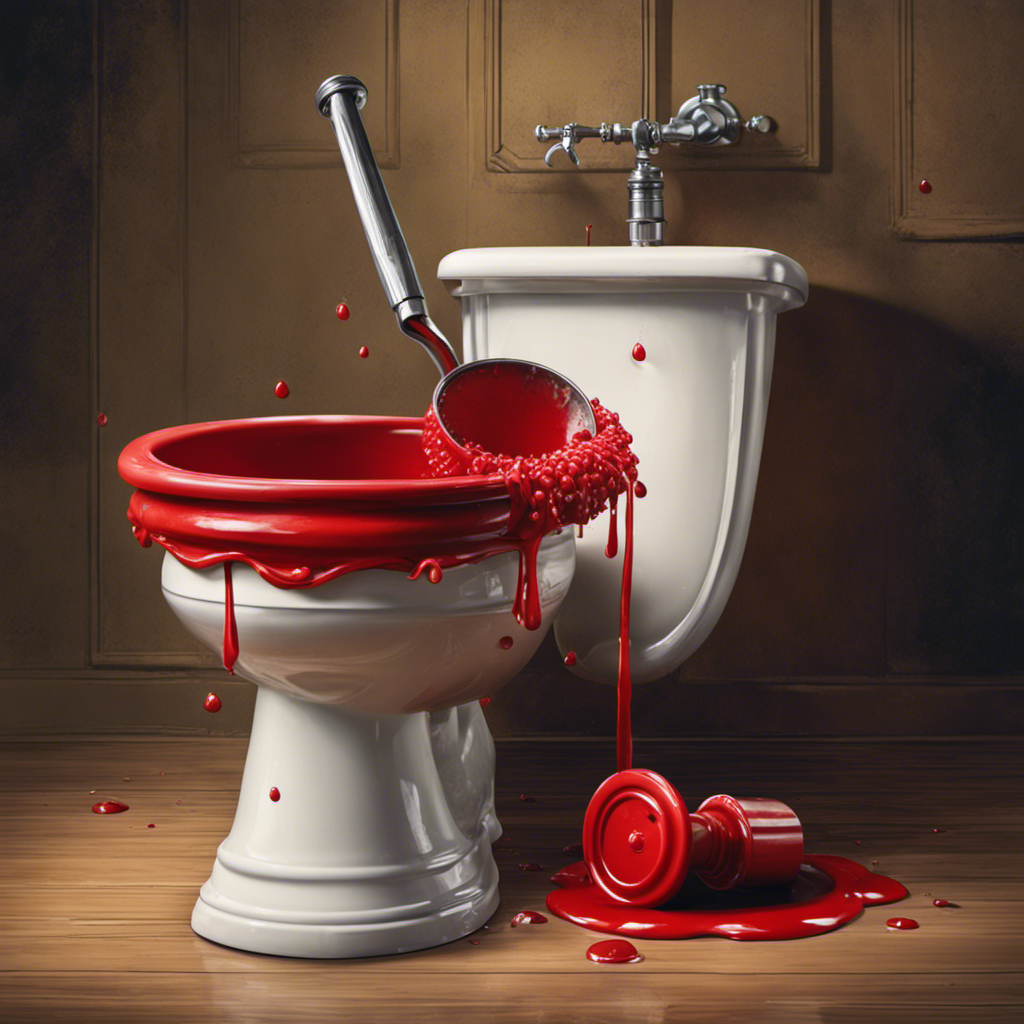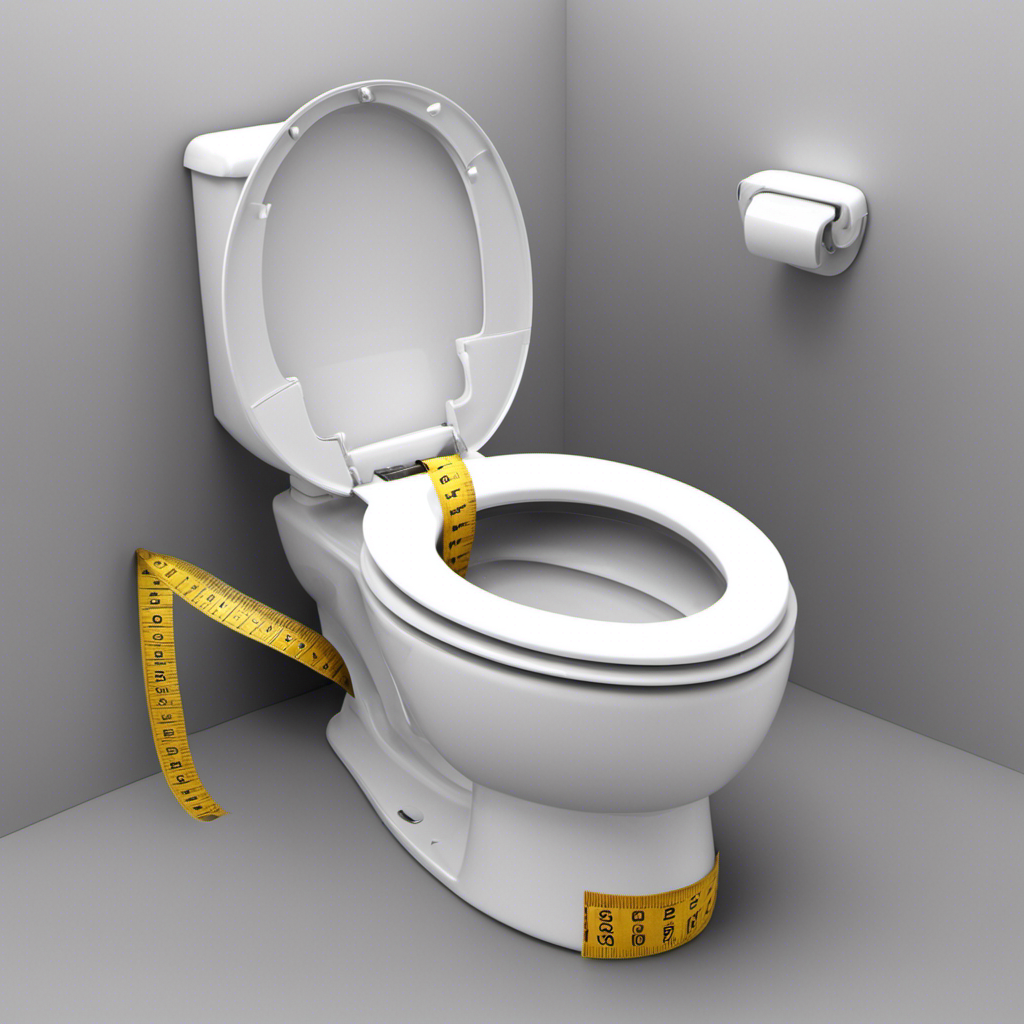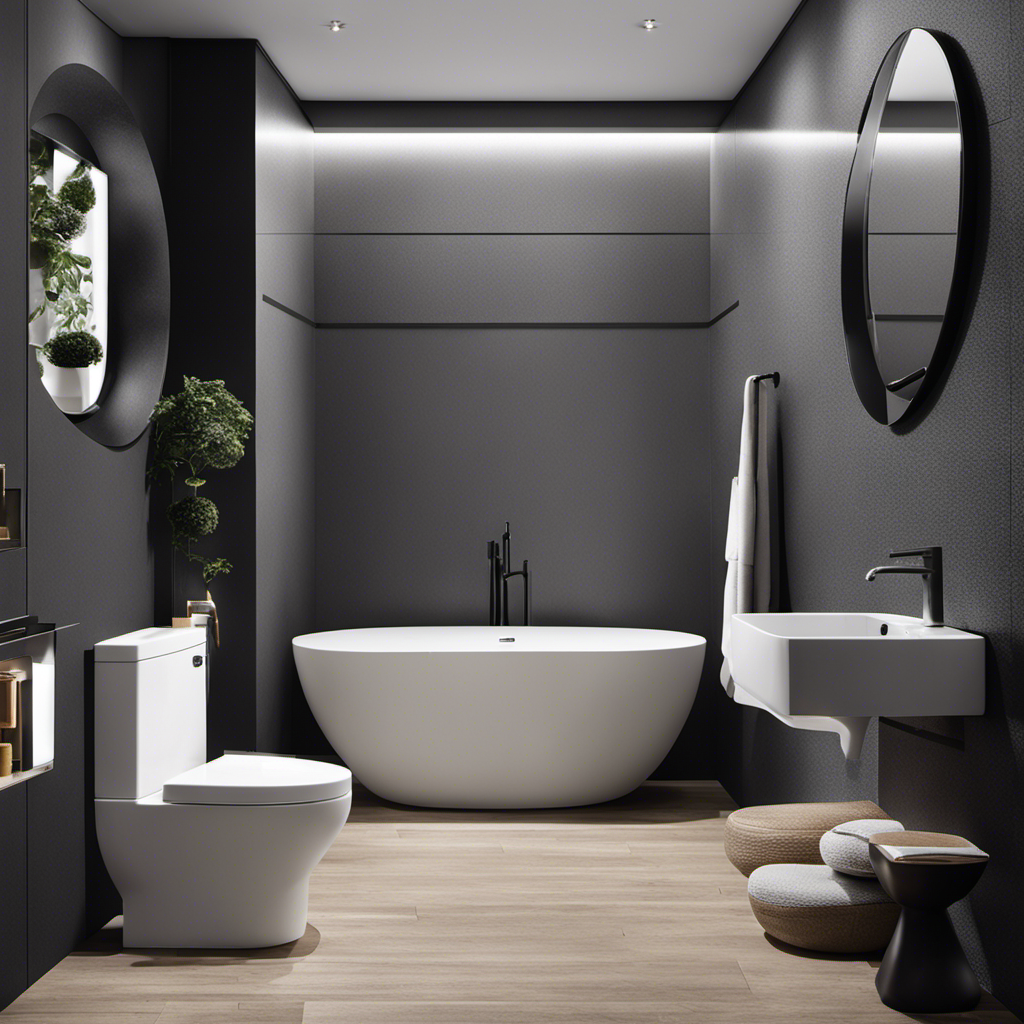How to Plunge a Toilet With a Plunger
As someone who has dealt with their fair share of clogged toilets, I understand the frustration and urgency that comes with the need to plunge.
But fear not, for I am here to guide you through the art of plunging a toilet with a plunger. With a few simple steps and a bit of elbow grease, you can restore your porcelain throne to its former glory.
So let’s dive in and learn how to tackle this common household challenge with confidence and ease.
Key Takeaways
- The equipment needed for plunging a toilet includes a sturdy rubber plunger with a flange or cup-shaped bottom, rubber gloves, and a bucket for water.
- It is important to choose the right type of plunger and ensure there is enough water in the bowl before using it.
- The proper plunging technique involves creating a tight seal with the plunger, applying firm and steady pressure, and avoiding breaking the seal during plunging.
- If a clog persists, troubleshooting tips include trying alternative methods like hot water, a plumbing snake, enzyme drain cleaner, baking soda and vinegar, or seeking professional help.
Equipment Needed
You’ll need a plunger with a flange or a cup-shaped bottom to effectively plunge the toilet. Common mistakes when it comes to plunging a toilet include using a plunger without a flange or cup shape, which can lead to ineffective plunging and messy clean-ups.
Another mistake is not creating a proper seal between the plunger and the toilet bowl, which can result in air escaping and reducing the plunging force. It is important to choose the right plunger and use it correctly to avoid these issues.
While there are alternative tools that claim to unclog toilets, such as drain snakes or chemical cleaners, a plunger remains the most effective and safest option.
Now that you have the right plunger, let’s move on to the preparation steps.
Preparation Steps
To get ready, make sure there’s enough water in the bowl before using a plunger. Preparation is crucial when it comes to unclogging a toilet. Understanding the causes of toilet clogs can help you effectively address the issue. Common causes include excessive toilet paper usage, foreign objects being flushed, or a buildup of waste and debris. By identifying the cause, you can determine the appropriate solution and prevent future clogs. Take a look at the table below for a quick overview of common toilet clog causes and their corresponding preparation time.
| Toilet Clog Cause | Preparation Time |
|---|---|
| Excessive TP Usage | 5 minutes |
| Foreign Objects | 10 minutes |
| Waste and Debris Buildup | 15 minutes |
Now that you’re aware of the potential causes, let’s move on to the proper plunging technique to effectively clear the clog.
Proper Plunging Technique
Once you’ve identified the cause of the clog, it’s important to follow the correct technique for effectively clearing it.
To plunge a toilet properly, start by positioning the plunger over the drain hole and making sure it forms a tight seal. Then, using firm and steady pressure, push and pull the plunger in an up and down motion. This creates suction and dislodges the clog. Be careful not to break the seal while plunging, as it can hinder the effectiveness of the technique.
One common mistake is using too much force, which could lead to water splashing out of the toilet bowl. If the traditional plunging method doesn’t work, there are alternative methods like using a toilet auger or chemical drain cleaners. These should be used with caution, as they can be damaging to the toilet or harmful to the environment.
Transitioning to troubleshooting tips, if the clog persists, it may be necessary to call a professional plumber for assistance.
Troubleshooting Tips
If the clog persists after attempting the basic techniques, it might be time to consider alternative troubleshooting methods. When it comes to unclogging a toilet, there are a few common mistakes that people often make. One of the most common mistakes is using too much force while plunging. This can actually worsen the clog or damage the toilet. Another mistake is not using the right type of plunger. Using a sink plunger instead of a toilet plunger will not be as effective.
To help you troubleshoot a stubborn clog, here are some alternative methods you can try:
| Method | Description |
|---|---|
| Hot Water | Pouring hot water into the toilet bowl can help dissolve the clog. |
| Plumbing Snake | Using a plumbing snake to physically remove the clog can be effective. |
| Enzyme Drain Cleaner | Enzyme drain cleaners are specifically designed to break down organic matter, which can help unclog the toilet. |
| Baking Soda and Vinegar | Mixing baking soda and vinegar and pouring it into the toilet bowl can create a chemical reaction that can dislodge the clog. |
| Professional Help | If all else fails, it may be time to call a professional plumber for assistance. |
Maintenance and Prevention
Remember, regular maintenance and prevention measures, like using a drain strainer and avoiding flushing non-flushable items, are key to preventing future clogs. To ensure your toilet functions smoothly, here are some maintenance tips to keep in mind:
- Clean the bowl regularly with a toilet brush and disinfectant to prevent bacteria buildup.
- Check the water level in the tank periodically to ensure it’s not too high or too low.
- Inspect the flapper valve for any signs of wear or damage and replace if necessary.
- Test the flush mechanism by flushing the toilet and observing if it drains properly.
Conclusion
Well, there you have it, folks. Plunging a toilet with a plunger may seem like a simple task, but as we have learned, it requires meticulous technique and precision.
Who knew that something as mundane as unclogging a toilet could be such an art form?
So next time you find yourself facing a clogged toilet, remember to channel your inner plumbing expert and wield that plunger with finesse. Because nothing says ‘I’m a pro’ like plunging a toilet like a pro.










